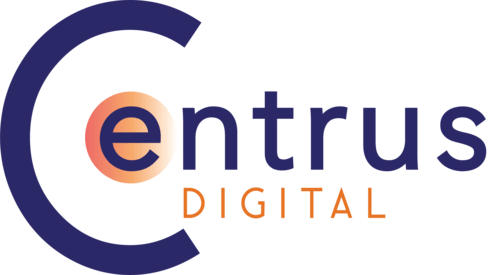Why use Granular Google PLA Segmentation and Attribution Analysis?

In the relentless arena of highly competitive product offerings, where consumers are empowered by choice and meticulously weigh their options, a generic, broad-stroke approach to Google Product Listing Ads (PLAs) is a recipe for margin erosion and missed opportunities. Success hinges on a nuanced understanding of which products drive profitable conversions and how your various campaigns influence discerning shoppers towards a purchase. This article delves into why strategically breaking down your PLA campaigns into granular groups for targeted ROAS bidding, coupled with rigorous attribution analysis, is a best practice and a necessity for maximizing profitability and achieving sustainable growth in competitive e-commerce landscapes.
Avoid setting a uniform ROAS target across your entire product catalog, especially when dealing with products with varying margins, competition levels, and customer acquisition costs. Imagine selling high-margin, niche artisanal goods and more commoditized, fiercely competitive everyday items within the same PLA campaign. Applying the same target ROAS to both likely leads to suboptimal outcomes. You might underspend on your high-margin winners, limiting their visibility, while overbidding on low-margin products, chasing unprofitable sales.
The solution lies in embracing granular segmentation within your PLA campaigns. By strategically grouping your products based on shared characteristics – such as product category, brand, high margin, seasonality, performance tier (best-sellers, underperformers), or even custom labels reflecting specific attributes – you gain the power to apply more precise ROAS targets. For instance:
- High-Margin Product Groups: These often tolerate a slightly lower ROAS target, allowing more aggressive bidding to capture valuable sales and market share. The long-term value of these customers usually justifies a higher initial acquisition cost.
- Competitive, Lower-Margin Product Groups: A higher ROAS target is crucial to maintain profitability. You should be more selective with your bids, focusing on highly qualified traffic and potentially accepting lower volume in exchange for better returns.
- Seasonal Product Groups: Adjusting ROAS targets based on seasonality ensures you’re bidding competitively during peak demand while scaling back during off-seasons to avoid wasteful spending.
- Performance-Based Groups: Separating high-performing products allows you to maximize their visibility, while isolating underperforming items enables you to diagnose issues (poor product data, uncompetitive pricing) and potentially adjust bids or optimize listings accordingly.
This granular approach to ROAS bidding ensures that your budget is allocated intelligently, maximizing profitability across your diverse product catalog. However, understanding which bids to adjust and by how much requires a deep dive into attribution analysis.
In competitive markets, the customer journey is rarely linear. Shoppers often engage with multiple touchpoints across various campaigns before deciding. They may see a generic PLA, click on a specific product ad after a more refined search, and interact with a brand campaign before converting. Relying solely on last-click attribution, which unfairly credits the final interaction, provides a myopic view of campaign performance and can lead to flawed bidding decisions. You might inadvertently undervalue crucial campaigns in the initial awareness or consideration phases.
This is where diligently studying the interaction between your campaigns becomes paramount. By analyzing attribution reports—particularly Conversion Paths and Assisted Conversions—and leveraging the Model Comparison Tool, you can uncover the true contribution of each campaign in the conversion funnel.
- Conversion Paths: Examining the sequences of ad interactions reveals how different PLA groups (and potentially other campaign types like Search or Display) work together. Do generic PLA campaigns often serve as the initial touchpoint, with more specific product group ads or brand campaigns closing the sale? Understanding these common paths informs your bidding strategy across the entire customer journey.
- Assisted Conversions: Identifying PLA groups with many assisted conversions highlights their importance in the overall conversion process, even if they don’t always receive the final click. You might consider maintaining or even increasing bids on these “assisting” campaigns, recognizing their role in nurturing leads.
- Model Comparison: Comparing the performance of your PLA groups across different attribution models (Linear, Time Decay, First Click, Data-Driven) can reveal significant discrepancies. If a particular product group receives substantial credit in a first-click model but significantly less in a last-click model, it suggests its strength in initial awareness. This insight can justify a more aggressive bidding strategy, even if its direct last-click conversion rate appears lower.

By combining granular PLA segmentation with insightful attribution analysis, you create a powerful feedback loop for optimizing your bidding strategies:
- Segment and Set Initial ROAS Targets: Based on product characteristics and initial assumptions about profitability and competition, create granular PLA groups and assign tailored ROAS targets.
- Monitor Performance and Gather Attribution Data: Continuously track the performance of each product group and diligently analyze your attribution reports to understand how different campaigns interact.
- Identify Key Interactions and Supporting Roles: Pinpoint which PLA groups frequently appear together in conversion paths and which significantly contribute to assisted conversions.
- Adjust Bids Based on Attributed Value: With a holistic view of campaign performance, adjust your ROAS targets and bids accordingly. Increase bids on product groups that consistently contribute to profitable conversions throughout the customer journey, even if their last-click ROAS isn’t the highest. Optimize bids on assisting campaigns to ensure they continue to guide users down the funnel effectively.
- Iterate and Refine: Continuously monitor performance and attribution data, making incremental adjustments to your PLA segmentation and bidding strategies to adapt to evolving market dynamics and consumer behavior.
In the competitive e-commerce landscape, a one-size-fits-all approach to PLAs is a path to mediocrity. By embracing the power of granular product group segmentation and diligently studying the intricate dance of campaign interactions through robust attribution analysis, you can unlock hidden profitability, optimize your ad spend, and gain a significant competitive edge by targeting the right products to the right customers at the correct bid. This strategic approach transforms your Google Ads campaigns from a cost center into a finely tuned engine for sustainable growth and profitability.
Yes, this article was written with the help of Google’s AI tool. It’s great for grammar and organization which is not my strong suit. However, we still provide lots of out-of-the-box research and our real life client experience. If you wish to discuss this topic further, click on the link…Book Time Online
